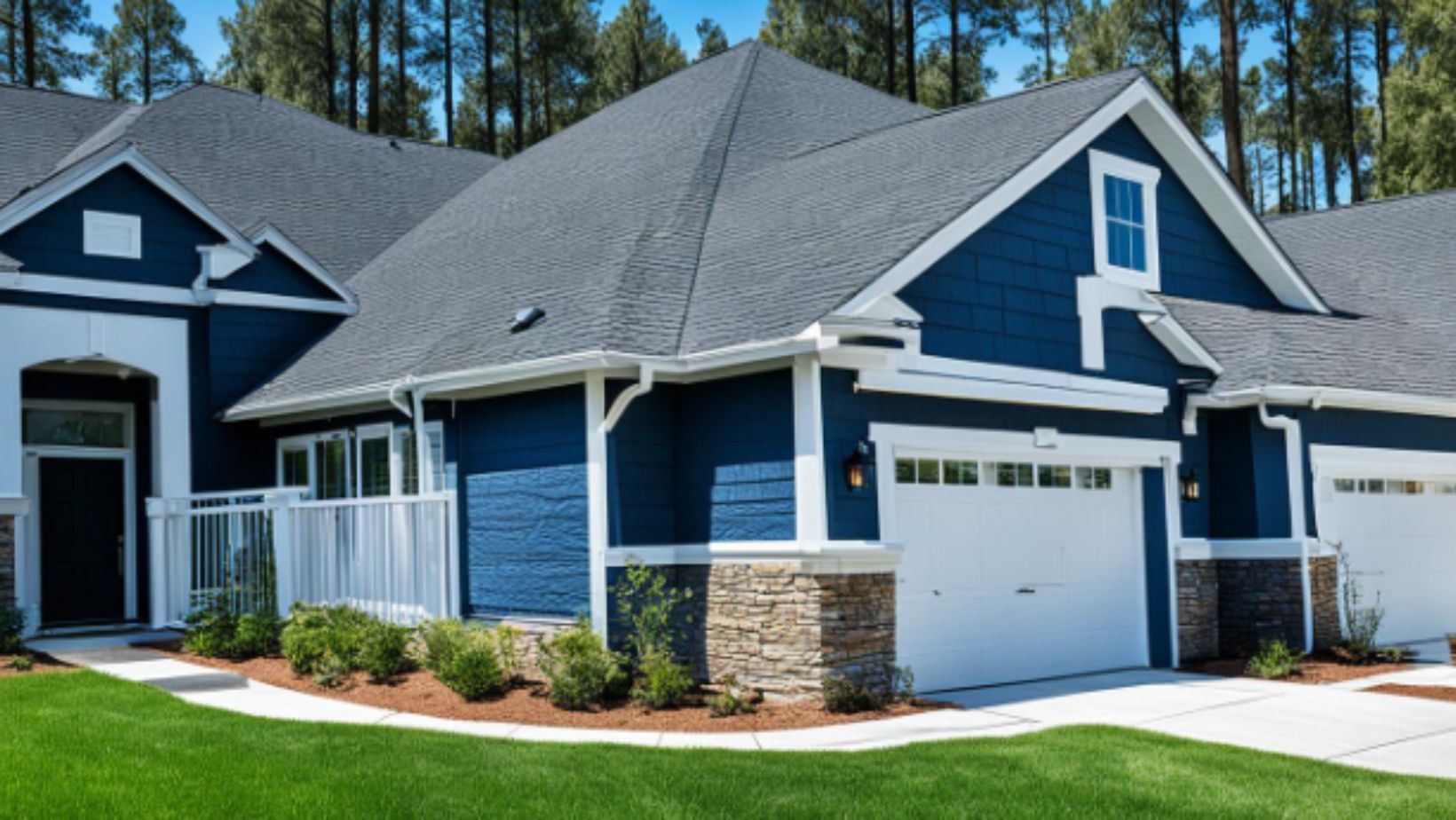
Over 70% of US homeowners associations (HOAs) don’t save enough money. This is a serious issue. It shows why planning and managing reserve funds well are so important for community groups. I’ll give you expert advice and simple tips for understanding and managing your HOA reserve fund effectively.
I have a lot of experience in this area. I will talk about the importance of reserve studies, the types available, what’s in them, and how to pick a reputable service. I’ll also help you with using these studies’ suggestions, the best ways to handle them, and what the law says. By the guide’s end, you will know a lot about HOA reserve studies. And you’ll feel confident managing your community’s reserve fund well.
Understanding HOA Reserve Studies
Homeowners associations (HOAs) take care of the community’s shared spaces and features. They use a tool called a reserve study to plan and budget for the future. This study looks at what needs to be fixed or replaced and how much it might cost.
What is a Reserve Study?
A reserve study details what shape the community’s big items are in. Think roofs, roads, and pools. It also maps out a financial game plan for when these things need a repair or replaced.
It considers how old these items are, how long they might last, and their cost to replace. This lets the HOA plan a budget wisely. They ensure there’s money set aside for big upcoming expenses.
Why are Reserve Studies Important?
HOA reserve studies are key to a community’s financial well-being over time. They prevent sudden jumps in fees, keep property values high, and make sure everything in the community is looked after. With a good plan in place, the HOA won’t face big, sudden bills, keeping the place nice for everyone. For more information read this HOA reserve study guide.
When Should a Reserve Study be Conducted?
State laws or the HOA’s own rules usually say when to do a reserve study, like every 3-5 years. But, it’s smart for the HOA to check their study each year and update it. They should adjust for new community items, price changes, or unexpected fixes. This keeps their finances healthy and the community a great place to live.
https://www.youtube.com/watch?v=dJolAL8WhC4
Types of Reserve Studies
HOA reserve studies come in three main types. Each type has its own benefits and things to think about. Knowing these differences helps both homeowners and associations pick the best way forward.
Full Reserve Study
A full reserve study is the most detailed type. It does a deep dive into the community’s shared spaces and checks the finances closely. This study shows exactly what the HOA’s stuff is worth now and what it’ll cost to replace it for the next 20-30 years. With this study, communities can make solid plans to save enough money for big fixes.
Update with Site Visit
An update with a site visit adds to a past full study. A professional checks up on the shared areas in person. They then adjust the financial plans. This is great for communities that have changed a lot or made updates since the last full study. It keeps their budget plans in line with what’s actually happening.
No Site Visit Update
Another option is updating without visiting the site. It involves looking at the past full study and considering any asset changes. Since there’s no in-person check, this choice might not catch every detail. But, it can still be very helpful. Especially if not much has changed since the last time the study was done.
Knowing the different types of reserve studies is key. It helps both homeowners and HOA groups choose wisely, making sure their budget plans are on point.
Key Components of a Reserve Study
A full reserve study for homeowners and community associations looks at three main things. They check the conditions of the assets, like the buildings and pools. They review the money situation and plan how they’ll save enough money for future costs.
Physical Analysis
The study first checks the state and life left in things like roofs and roads. This part sees what needs fixing or changing soon and how much that might cost. Knowing the condition of the community’s stuff helps in planning the right money for its upkeep.
Financial Analysis
The money side looks at the current savings, future income, and what they’ll need to spend. It figures out how much money to save for when big repairs are needed. It also looks at things like rising prices and big update plans.
Funding Plans
After both types of checks are done, a plan is made to save the right amount of money. This plan sets how much they should save, when to spend it, and how to keep the savings strong. This plan helps the community group get ready for future big spends.
| Component | Purpose | Key Considerations |
| Physical Analysis | Assess the current condition and remaining useful life of the community’s common elements | Identify components that need repair or replacement, estimate associated costs |
| Financial Analysis | Evaluate the association’s reserve fund balance, projected income, and anticipated expenses | Determine appropriate contribution rates to maintain a healthy reserve fund |
| Funding Plans | Recommend strategies for maintaining the reserve fund’s long-term stability | Outline contribution rates, timing of expenditures, and funding approaches |
HOA Reserve Study Guide
This guide is for all homeowners looking to grasp the significance of reserve fund planning. We will delve into the main aspects of reserve studies. These include types, critical features, and legal aspects. This will help you become more active in the financial management of your community association.
Are you living in a condo association or a homeowners association? Then, you need to know about reserve study requirements. Also, the guide will explain the vital role of HOA reserve funding. With this knowledge, you can work together with your HOA board and reserve study providers.
After reading this guide, you will understand how reserve fund planning works. This will allow you to play a big part in homeowner association budgeting. Plus, you will be able to help manage the community association reserves for your HOA.
Selecting a Qualified Reserve Study Provider
Choosing the right provider for your HOA’s reserve study is vital. It ensures the study’s analysis is accurate and reliable. As a homeowner, you need to look at several key factors when making your choice.
Professional Credentials
Find a provider with solid credentials. For example, they should have an RS designation from CAI or a PE license. These show they are experts in HOA reserve studies and follow high industry standards.
Experience and Reputation
Check the provider’s experience and reputation in the HOA field. Ask about their work with similar communities and if clients have given positive feedback. Their experience and good reputation suggest they can provide a quality, trustworthy reserve study.
Cost and Services
It’s wise to compare the prices and services of different providers. Remember, cost isn’t everything. Consider the study’s depth, the analysis’s detail, and any extra services like updates. Finding a balance between quality and cost is key for your HOA’s financial health.
| Reserve Study Provider | Professional Credentials | Years of Experience | Cost | Additional Services |
| ABC Reserve Consultants | RS, PE | 15 years | $4,500 | Regular updates, on-call support |
| XYZ Reserve Analysis | RS | 8 years | $3,800 | Quarterly financial reporting |
| Acme Reserve Specialists | PE | 12 years | $5,200 | Custom funding plan recommendations |
Implementing Reserve Study Recommendations
Once the HOA reserve study is done, the homeowners association needs to follow through. They must put the recommendations into action. This is important for the community’s financial future. Many important steps are involved. They all help keep the community’s reserve fund planning strong.
Adjusting Contribution Rates
The HOA will change how much homeowners pay into the reserve fund. This is based on what the community association reserves study suggests. 
Prioritizing Projects
The reserve study requirements make a plan for when to fix or replace community parts. The HOA board and residents must decide what needs attention first. They look at safety, how well it works, and the effect on the community.
Maintaining Accurate Records
Keeping good records is vital in the reserve fund planning. The HOA must keep track of every dollar contributed, spent, and invested. This information helps reserve study providers and HOA reserve specialists in the future. They can see the community’s financial state. Then, they can give good advice on the reserves.
Reserve Study Ideal Practices
For the best impact of the HOA reserve study and to keep the community’s finances strong, certain steps are key to take:
Regular Updates
It’s vital to keep the reserve study current. This means checking the state and replacement needs of the common areas often.
Experts advise a full check every three to five years. And doing smaller updates each year helps capture any changes fast.
Transparency and Communication
Keeping things clear and talking often with homeowners matters a lot. Sharing the study’s details, funding plans, and reserve fund changes regularly builds trust.
It makes sure everyone knows why planning for the future is so critical. This way, the community’s long-term financial health remains strong.
Long-term Planning
The HOA reserve study guide highlights the importance of looking ahead. Planning for 20 to 30 years helps the HOA prepare well for upcoming repairs and emergencies.
This forward-thinking keeps the community running smoothly. It ensures great amenities and services without sudden financial shocks.
Legal and Regulatory Considerations
When dealing with HOA reserve studies, it’s crucial to know the legal side. This means understanding state laws and regulations and following the HOA’s governing documents.
State Laws and Regulations
Every state has its own regulations for reserve fund planning and community association financial management. HOAs need to know their state’s rules. This includes how often to do reserve studies, the minimum funds required, and what needs to be disclosed. They should always keep track of any rule changes to stay on top of things.
HOA Governing Documents
Besides state laws, HOAs must stick to their own rules too. This means making sure their reserve study and budget management are in line with the association’s documents. These could be the covenants, bylaws, and other policies. These internal rules might have their own details on condo association reserve studies, HOA reserve funding, and what general reserve study requirements are needed for the community.
, by understanding all these rules, associations can make a good financial plan. This helps to keep the community’s finances in good shape for the future.
Budgeting for Reserve Funds
Managing the reserve fund effectively is vital for your community’s financial health. I’m here to help you understand the essentials of budgeting for your HOA’s reserve funds.
Estimating Expenses
Accurate estimation of expenses is crucial for a strong reserve fund budget. You should carefully assess the costs of maintaining and repairing common areas. Through a detailed review of a reserve study, estimate repair and replacement costs. Understanding these fees lets you make smart choices and use funds well.
Determining Contribution Rates
After outlining your costs, it’s time to set contribution rates for your HOA’s reserve fund. To do this, look at the fund’s current balance, future costs, and the level of funding you aim for. This ensures the fund is ready to meet your community’s upcoming needs.
Investment Strategies
Investing in the reserve fund wisely can grow its value and keep your money accessible. Look into options like money market accounts and mutual funds. Make sure to choose investments that match your community’s financial goals.
It’s also wise to work with financial professionals. They can help you design a strategy to increase your reserve fund’s value over time.
FAQ
What Is A Reserve Study?
A reserve study looks ahead at the costs to replace common elements in an HOA. It’s a detailed look at what needs to be fixed, how much it will cost, and when it might need to be done.
Why Are Reserve Studies Important?
They are key for an HOA’s financial health, pointing out future expense needs. Forecasting these needs helps avoid surprises like big bills or not having enough saved up.
When Should A Reserve Study Be Conducted?
Ideally, every 3-5 years to keep the financial plan current. Also, whenever big changes or repairs are on the horizon, a new study should be done.
What Are The Different Types Of Reserve Studies?
The study types are Full Reserve, Update with Site Visit, and No Site Visit Update. The choice depends on what the HOA needs and the specific situation.
What Are The Key Components Of A Reserve Study?
There are usually three parts: checking the site, financial planning, and how to fund it all. These steps clearly lay out the HOA’s past and future money needs.
How Do I Select A Qualified Reserve Study Provider?
Look at the provider’s skills, past work, cost, and what they can do for you. Pick someone who knows your area well and is known for accurate work.
How Do I Implement The Recommendations From A Reserve Study?
After the study, adjust how much everyone pays, then schedule what needs to be fixed. Keep good records and keep residents in the loop.
What Are Some Best Practices For Managing HOA Reserve Funds?
Keep the study updated, be open with residents, and plan for the long term. This helps maintain the community’s financial health.
What Are The Legal And Regulatory Considerations For HOA Reserve Studies?
Adhering to local laws and HOA rules is crucial. Not following these rules can lead to fines or other penalties.
How Do I Effectively Budget For HOA Reserve Funds?
Make sure to cover future expenses, figure out fair rates, and invest wisely. This will lead to a stable financial future for the community.




